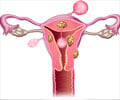- Uterine fibroid embolization (UFE) is a minimally invasive, safe and effective procedure
- UFE is better than surgical procedures such as myomectomy
- It has fewer complications and lesser chances of recurrence of uterine fibroids
Uterine fibroids, also known as leiomyomas, are non-cancerous growths that occur in the muscular wall of the uterus and affect 20-40 percent of premenopausal women. They do not increase the risk of uterine cancer.
Read More..
Uterine Fibroids: Facts & Figures
- 70-80 percent of women develop uterine fibroids
- 5-10 percent of women show symptoms of uterine fibroids
- 28 percent have never heard of uterine fibroids
- 57 percent believe they’re not at risk
- 19 percent believe fibroids are cancerous
- 11 percent believe that hysterectomy (surgical removal of uterus) is the only treatment option
- 44 percent have never heard of UFE
Study Features
- This was a retrospective cohort study
- The study was carried out between 1st January, 2008 to 31st December, 2014
- The study included 950 uterine fibroid patients, whose treatment outcomes were analyzed
- Half of the patients underwent UFE, while the other half underwent myomectomy
Study Findings
- Complications were more in the myomectomy group than in the UFE group after a 7-year follow-up
- Blood transfusion rate was 2.9 percent in the myomectomy group compared to 1.1 percent in the UFE group
- Hemoglobin levels improved significantly in both groups one year after the procedures due to reduced bleeding
- Both procedures were comparably effective based on the rate of secondary interventions (UFE, myomectomy or hysterectomy) required
- Secondary interventions were required in 9.9 percent of women in the myomectomy group, compared to 8.6 percent in the UFE group
- Rate of miscarriage was similar in both groups
Treatment Options for Uterine Fibroids
Treatment options include administration of medication. If this is unsuccessful, then UFE, myomectomy or hysterectomy may be recommended.“Women have options for treating their uterine fibroids. UFE and myomectomy are procedures with similar efficacy and durability for treating fibroids, but UFE has fewer complications and shorter hospital stays,” said lead author Dr. Jemianne Bautista Jia, MD, who is a radiologist at Kaiser Permanente, Los Angeles, California, USA. “There are important factors women should consider when choosing between the procedures. These factors include the risk of bleeding, possibility of infections, and recovery time.”
- Uterine Fibroid Embolization (UFE): This procedure is performed by an interventional radiologist, who makes a tiny incision in the groin. This allows access to the blood vessels carrying oxygen and nutrients to the fibroids, so that they can survive. A catheter (narrow plastic tube) is inserted through the femoral artery, guided by real-time imaging. Upon reaching the target area, small particles are released that block the blood supply to the fibroids, depriving them of nutrients, resulting in their shrinkage and complete resolution. The success rate of UFE is 90 percent. UFE is minimally invasive with a lesser risk of post-procedure complications. It completely relieves the symptoms, preserves the uterus, has a short recovery time, and improves the quality of life
- Myomectomy: Also known as fibroidectomy, this is a major surgical procedure that removes the fibroids, leaving the uterus intact. Unlike hysterectomy, a woman having myomectomy can still bear children. There are three types of myomectomy: (i) abdominal myomectomy, (ii) laparoscopic myomectomy, and (iii) hysteroscopic myomectomy. This procedure is very effective and improves symptoms such as heavy menstrual bleeding and pelvic pain. However, its major drawback is the chance of recurrence of the fibroids
Future Plans
The research team proposes to study the impact of all uterine-sparing fibroid procedures on pregnancy, which is still not well-understood.Reference:
- Comparison of uterine artery embolization and myomectomy for treatment of symptomatic uterine fibroids: A long-term retrospective analysis. SIR Annual Scientific Meeting, March 23-28, 2019, Austin, Texas, USA. Abstract 137 - (https://www.sirmeeting.org/index.cfm?do=abs.viewAbs&abs=2858)
Source-Medindia













